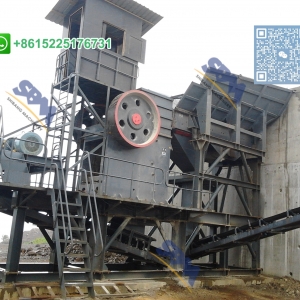Oil and gas transportation is a vital component of the energy industry, acting as the bridge between production sites and end-users. This intricate process ensures the seamless movement of these essential resources from remote extraction locations to refineries, storage facilities, and ultimately, to consumers. The reliability, safety, and efficiency of oil and gas transportation are critical for maintaining energy security and supporting the global economy.

Modes of Transportation
Oil and gas are transported using various methods, each tailored to the specific nature of the product, geographical considerations, and economic factors. Pipelines are the backbone of the industry, especially for transporting crude oil and natural gas over long distances. These systems are highly efficient and operate continuously, making them the preferred choice for connecting production fields to refineries and distribution hubs.
For regions where pipelines are not viable, maritime transportation steps in as a key alternative. Oil tankers and liquefied natural gas (LNG) carriers facilitate global trade by moving vast quantities of oil and gas across oceans. These vessels are equipped with advanced technologies to ensure the safe handling of volatile substances, minimizing the risk of spills or other incidents.
In addition to pipelines and shipping, rail and road networks play a significant role in oil and gas transportation, particularly for shorter distances or in areas lacking pipeline infrastructure. Trucks and railcars provide flexibility in distribution, making them indispensable for delivering refined products such as gasoline, diesel, and liquefied petroleum gas (LPG) to retail outlets and industrial consumers.
Challenges in Transportation
The transportation of oil and gas is fraught with challenges that require constant innovation and stringent management. Environmental concerns are paramount, as any mishap during transit can lead to catastrophic consequences for ecosystems and local communities. As a result, the industry invests heavily in safety measures, including rigorous inspection protocols, leak detection systems, and emergency response strategies.
Geopolitical dynamics also impact transportation routes and costs. The security of shipping lanes, pipeline corridors, and key transit chokepoints, such as the Strait of Hormuz or the Panama Canal, is of global strategic importance. Disruptions in these areas can have far-reaching consequences on energy markets and prices.

Technological Innovations
Advances in technology are transforming oil and gas transportation. Digitalization and automation have enhanced the monitoring and management of pipelines and shipping operations. Smart sensors and data analytics provide real-time insights into flow rates, pressure levels, and potential hazards, enabling proactive interventions.
In maritime transportation, the adoption of cleaner fuels and energy-efficient vessel designs is helping reduce greenhouse gas emissions. LNG bunkering, for instance, is becoming more common as the industry strives to comply with international environmental regulations.
How Simulation Tools are Used for Oil and Gas Transportation
Simulation tools play a transformative role in the oil and gas transportation sector, enabling companies to design, analyze, and optimize complex logistics networks with precision and efficiency. These tools provide virtual environments where operators and engineers can predict, test, and improve various aspects of the transportation process, from pipeline operations to maritime logistics and emergency response planning.
1. Designing and Optimizing Pipeline Networks
Pipeline infrastructure is the cornerstone of oil and gas transportation. Simulation tools allow engineers to design pipelines by analyzing factors such as terrain, flow dynamics, and material properties. Advanced fluid dynamics models simulate the behavior of oil, gas, or multiphase flows within the pipeline under different pressure and temperature conditions.
These simulations help in optimizing the pipeline's diameter, material choice, and pumping or compression requirements, reducing costs while maximizing efficiency. Moreover, tools like transient flow simulators predict how pipelines respond to operational changes, such as sudden shutdowns or changes in flow rates, ensuring robust design and operational resilience.
2. Enhancing Maritime Transportation
In maritime oil and gas transportation, simulation tools are indispensable for vessel design, route optimization, and risk assessment. Shipbuilders use simulations to test the performance of oil tankers and LNG carriers under various sea conditions, ensuring stability and safety.
Navigation simulations aid in determining the most efficient and secure shipping routes by considering factors like weather patterns, port conditions, and potential chokepoints. Additionally, simulation tools model scenarios such as oil spills, enabling operators to evaluate containment strategies and environmental impact mitigation measures.
3. Emergency Response and Risk Management
Oil and gas transportation involves inherent risks, such as leaks, spills, or pipeline ruptures. Emergency response simulation tools create virtual scenarios that mimic real-world incidents.
These simulations allow operators to test response strategies, evaluate their effectiveness, and train personnel in handling emergencies. By modeling the spread of oil spills or gas leaks under different environmental conditions, companies can refine containment and cleanup procedures, minimizing environmental damage and associated costs.
4. Logistics and Supply Chain Management
Simulation tools are also used to optimize the logistics of oil and gas transportation. From scheduling shipments to managing storage and distribution, these tools analyze the movement of resources through the supply chain.
For example, simulation models can predict the impact of demand fluctuations, geopolitical events, or infrastructure disruptions on transportation operations. By running "what-if" scenarios, companies can develop contingency plans and ensure uninterrupted supply to consumers.
5. Digital Twins in Transportation
One of the most advanced applications of oil and gas transportation simualtion is the use of digital twins. A digital twin is a virtual replica of a physical asset, such as a pipeline, vessel, or entire transportation network.
These replicas are continuously updated with real-time data from sensors and monitoring systems, allowing operators to simulate various conditions and predict potential issues. For instance, a digital twin of a pipeline can simulate the impact of corrosion or pressure changes, enabling proactive maintenance and reducing the risk of failures.

6. Supporting Environmental Compliance
As the industry faces increasing pressure to reduce its environmental footprint, simulation tools help companies align with sustainability goals. Emissions modeling tools evaluate the carbon footprint of transportation operations, enabling companies to adopt cleaner technologies and practices.
For example, simulations can assess the efficiency of LNG-powered vessels or hydrogen-powered trucks, guiding investment decisions and ensuring compliance with environmental regulations.
The Future of Oil and Gas Transportation
As the global energy landscape evolves, so too will the methods of transporting oil and gas. The shift towards renewable energy sources may reduce demand for fossil fuels over time, but oil and gas will continue to play a critical role in the energy mix for the foreseeable future. The industry must adapt by enhancing the efficiency and sustainability of its transportation systems.
Efforts to decarbonize transportation, such as using hydrogen-powered trucks or investing in carbon capture technologies for pipelines, are already underway. These innovations not only address environmental concerns but also ensure the long-term viability of the industry in a changing world.
Conclusion
Oil and gas transportation is a complex yet indispensable aspect of the energy sector. By embracing technology, prioritizing safety, and addressing environmental challenges, the industry can continue to deliver these essential resources reliably and responsibly. From pipeline design to maritime logistics and risk management, simulation tools enable operators to navigate the complexities of transporting oil and gas in an increasingly dynamic landscape.







